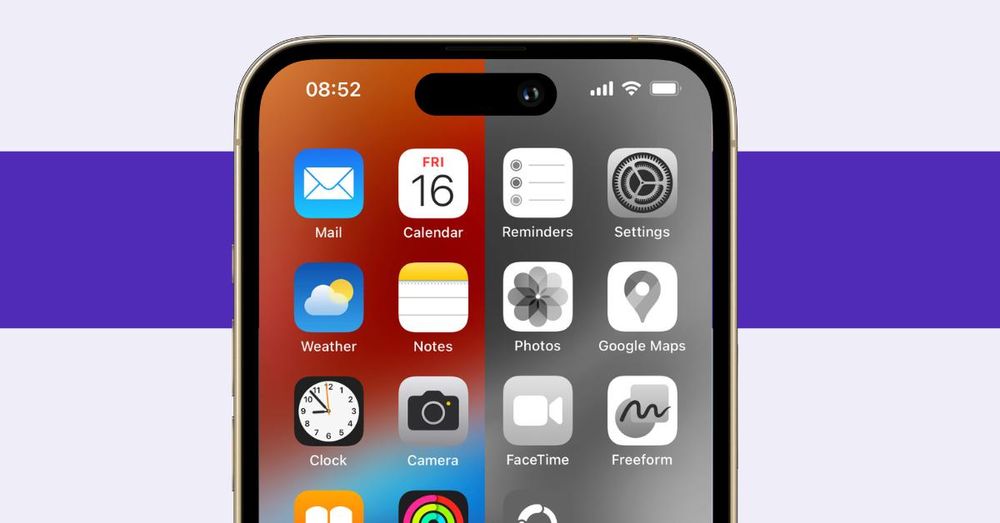SCREEN TIME
The Grayscale Effect: A Subtle Approach to Kids' Screen Time
Ever thought a simple shift in color could make your kid's device less captivating, while still keeping its benefits intact? We'd like to introduce a relatively unheard-of but quite effective strategy to help manage your kid's screen time: turning their smartphones into grayscale. Yes, you heard it right! It's time to let the colors fade, for a better cause.

We all know the struggle of managing our kids' screen time. The exciting, vibrant, and engaging world inside their devices can seem impossible to compete with. The bright colors and high-definition graphics of the smartphone can make it hard for our kids (and ourselves!) to put down, leading to excessive screen time. But what if we could make their phones a bit less mesmerizing, less addictive, while maintaining the positives? Enter grayscale mode - an ingenious yet simple tweak that could be the game-changer in your parenting strategy.
But before we delve into this rather unusual approach, let's understand the science behind it.
The Colorful Lure of the Digital World
Psychological studies show that color plays a significant role in our decision-making processes. Tech companies capitalize on this, using a specific range of colors to draw us in and keep us scrolling, tapping, and swiping for longer periods. The colorful palette of icons, notifications, games, and social media feeds stimulate our visual senses and reward our brains, making these activities irresistible. This powerful allure of colors can lead our kids to spend more time than necessary on their phones, caught in a never-ending cycle of scrolling and gaming.
Have you ever noticed how your kid (and maybe you too) can't resist the red notification bubble on Facebook or Instagram? That's no accident. Colors like red and yellow trigger an emotional response, generating excitement and demanding attention, keeping us engaged for longer than we realize.
Going Grayscale: How Does It Help?
So, what happens when we strip the color away? A grayscale screen, as the name suggests, displays only shades of gray. It's like taking the candy coating off the smartphone, leaving behind only the essential functionality. The result? Without the vibrant colors to stimulate their senses, your kid might find the content on their smartphone less appealing, less rewarding, and easier to put down.
Grayscale isn't a new concept. In fact, some early tech adopters, digital minimalists, and wellness enthusiasts have been using this feature for years to help combat phone addiction and reclaim their time. By turning their colorful screens into monochromatic displays, they've found it easier to disengage, reducing the time they spend on their devices.
Lead by Example
Before you bring in this change for your kid, give it a go yourself. Try using your phone in grayscale mode for a day or two. See how you feel when the colorful apps and games are just shades of gray. This firsthand experience will not only give you a sense of what your kid will be going through, but it will also help you empathize with them and guide them through this change. Keep in mind that this little experiment could go a long way in demonstrating responsible digital habits.
Grayscale for Kids: A New Parenting Hack
While kids and teens may initially resist the loss of color on their screens, they may soon find it less compelling to spend hours on end scrolling through social media or playing games. This doesn't mean they'll stop using their devices altogether. Instead, it encourages healthier, more mindful use.
With grayscale, the distracting allure of colorful apps and games is reduced, making it easier for your kid to focus on more important tasks. Homework, reading, or even engaging in physical activities might suddenly seem more appealing. The best part? Grayscale mode can be easily turned on and off, giving you control over when and for how long your kid’s device should be in grayscale mode.
Turning your kid's smartphone grayscale during specific hours of the day, such as study hours or dinner time, can help them focus more on the task at hand. They're less likely to be distracted by the color-coded notifications and can concentrate better on their homework or family conversations.
This strategy also works well as a gentle disciplinary measure. Instead of completely taking away their phone—which we know can cause conflict—you can switch their screens to grayscale. It's a less drastic, but often equally effective method to curb excessive screen use.
Moreover, by switching to grayscale, you're also teaching your kid an important lesson about balance and self-control. It's a step towards educating them about healthy digital habits, providing them with the tools to manage their own screen time as they grow older.
How to Turn On Grayscale on iPhone and Android
Excited about giving this strategy a shot? Here's how you can enable grayscale mode:
On iOS devices (iPhone and iPad):
- Go to Settings.
- Select Accessibility.
- Tap on Display & Text Size.
- Scroll down and switch on Color Filters.
- Once Color Filters is on, select Grayscale.
On Android devices:
- Go to Settings.
- Tap on Accessibility.
- Tap on Visibility enhancements.
- Scroll down and tap on Color correction.
- Turn it on and select Grayscale.
That's it! You've turned the device into grayscale mode.
Seeing the World in Gray
Remember, the goal here is not to make smartphone use a dreary experience but to help your kid learn to use technology in a balanced, mindful way. You can even use the grayscale setting as a tool for certain times, like homework time or after dinner, to subtly encourage less screen time.
So, try out this new shade of parenting and pave the way for healthier digital habits.